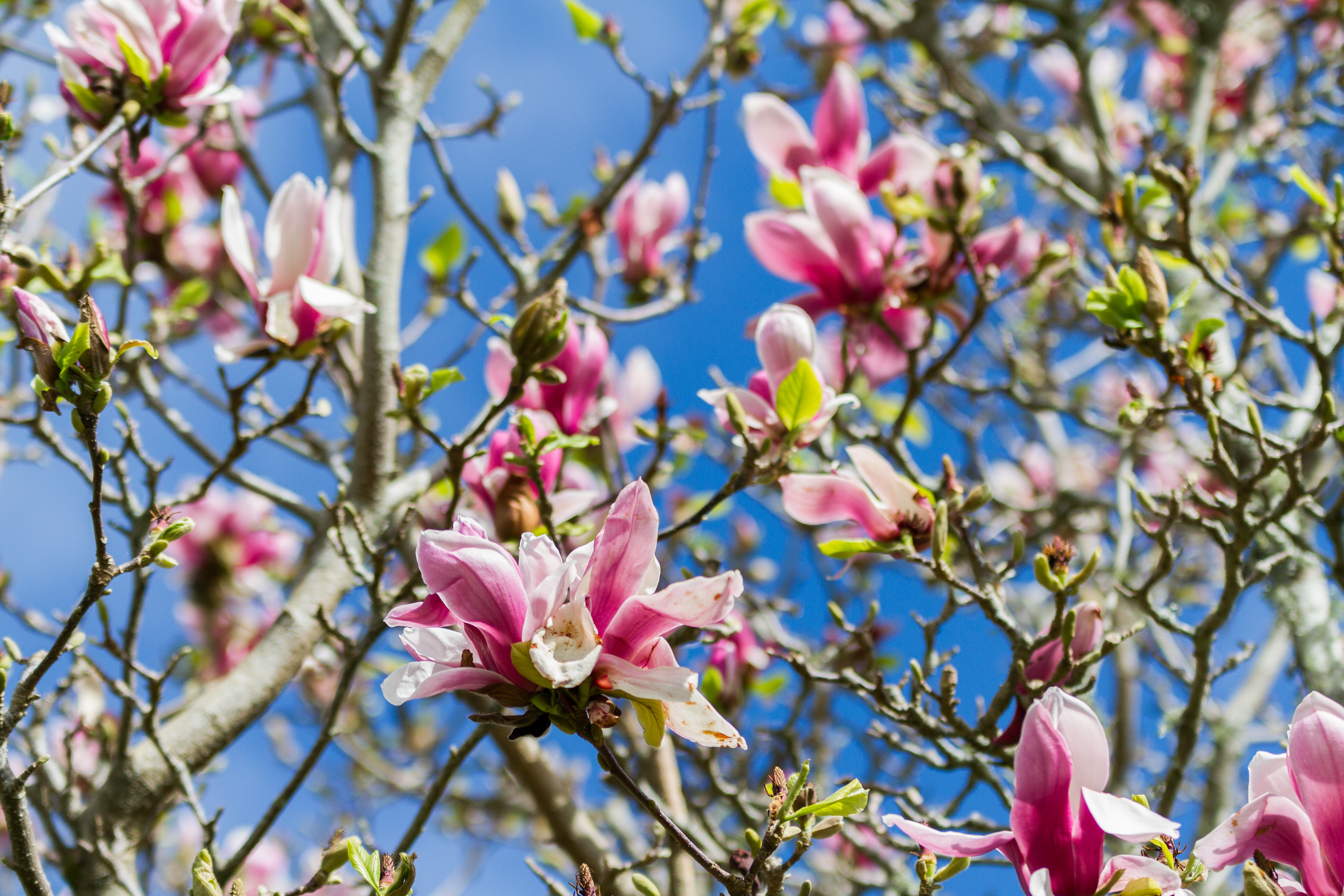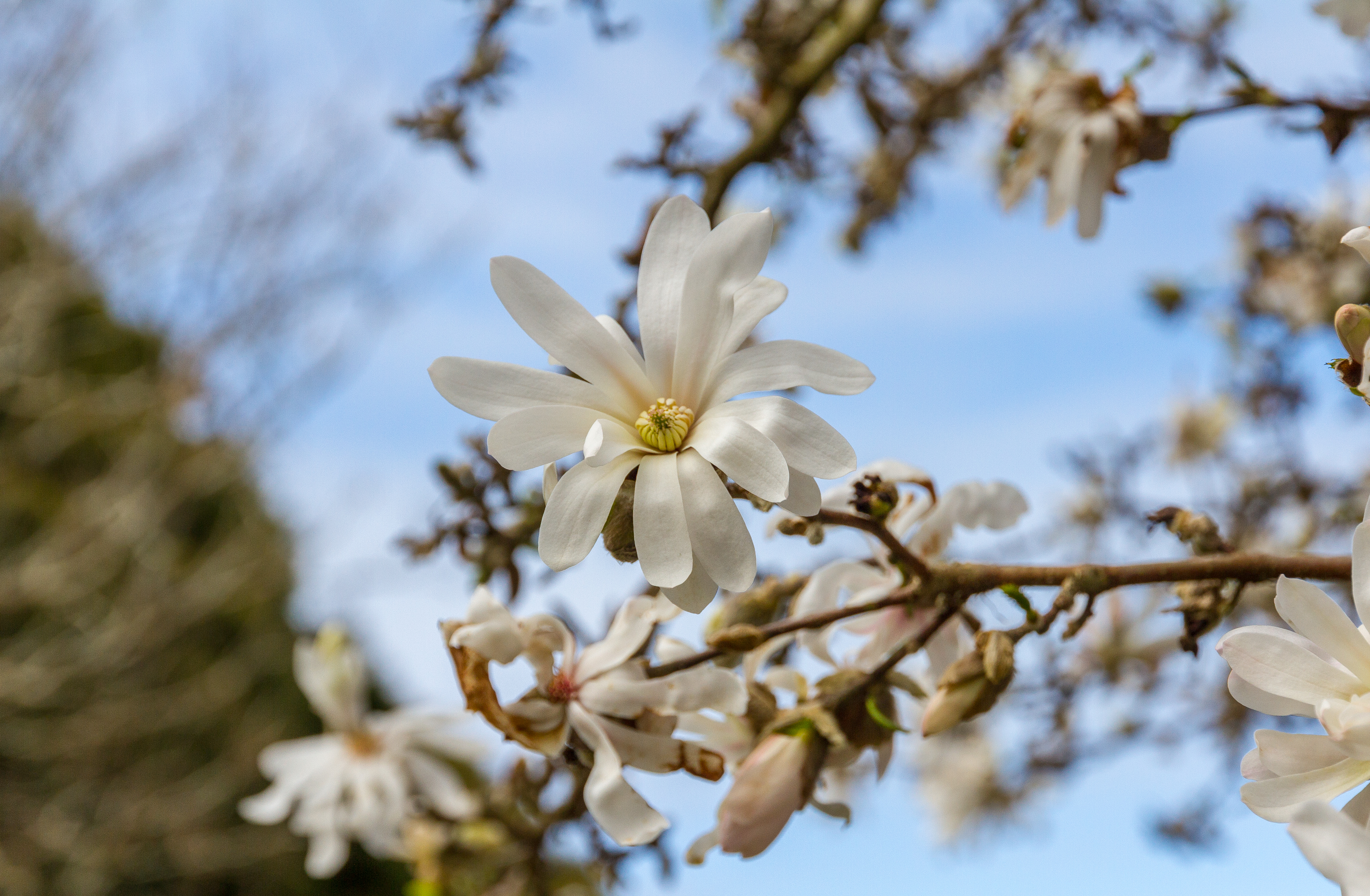Ecology
our amazing magnolia trees
Have you seen our beautiful magnolias in Cornwall Park?
Magnolia is a genus of flowering trees and shrubs known for their large and fragrant flowers. They are a common ornamental plant around the world, and you can see them in many gardens around Aotearoa New Zealand, as well as several different places in Cornwall Park.

Where are our magnolias?
We have a few different species and varieties of magnolias here in Cornwall Park. Around Huia Lodge, there are some large, evergreen southern magnolia (Magnolia grandiflora). You can find more M. grandiflora next to the main roundabout carpark, as well as M. doltsopa, which usually flowers in July. Star magnolia (M. stellata) can be found next to the Archery Club carpark.

The most well-known magnolias in the park however are those in the grove by the Cafe, which all flower in winter whilst having no leaves, and produce beautiful pink flowers. This grove is made up of a few different hybrid varieties, including saucer magnolia (M. xsoulangeana), M. ‘Galaxy’, and M. ‘Star Wars’ (yes, those are the real names of those varieties!).
Fun facts
- The Magnolia genus is ancient, it is thought to be up to 100 million years old, meaning magnolia trees could have been around at the same time as dinosaurs!
- There are hundreds of different species of magnolias around the world.
- Magnolias are not native to New Zealand, but instead were brought here for use as ornamental trees or shrubs.
- Some species are native to Asia, and some to the Americas.
- Magnolias can produce fruit, and have interesting-looking cone-shaped fruits!
- Magnolias can be deciduous (lose their leaves in winter) or evergreen (keep their leaves all year round) depending on the species.
Flowers
The flowers of magnolias can be a variety of colours, depending on the species. The most recognisable are often white and pink, but magnolia flowers can also be purple, green, or yellow.
Magnolias evolved so long ago, and they are thought to have evolved before bees did. Most flowering plants have evolved to attract bees for pollination, but magnolia flowers likely evolved to be pollinated by insects other than bees. It is theorised that Magnolia were originally pollinated by beetles, and this is backed up by their flowers being extra tough, which would mean they are not damaged in pollination, as beetles can be a bit more rough than bees.
Cultural significance
Magnolia trees have many different uses around the world. Some can be used for timber, while the flowers of some species are pickled for use as condiments, dried and used for tea, or even cooked and eaten.
Magnolia bark and flowers have also been used in traditional Chinese and Japanese medicine to treat a wide range of illnesses and symptoms. As well as this, different magnolia species represent the official flowers of several different states and countries around the world!
Come and visit our beautiful magnolias in Cornwall Park any time, and see how many different varieties you can find!
Please remember that foraging is not permitted in Cornwall Park. You can also learn more about the different trees in the park with our tree brochure here or pop into Huia Lodge Discovery Hub, 10am-4pm daily.
